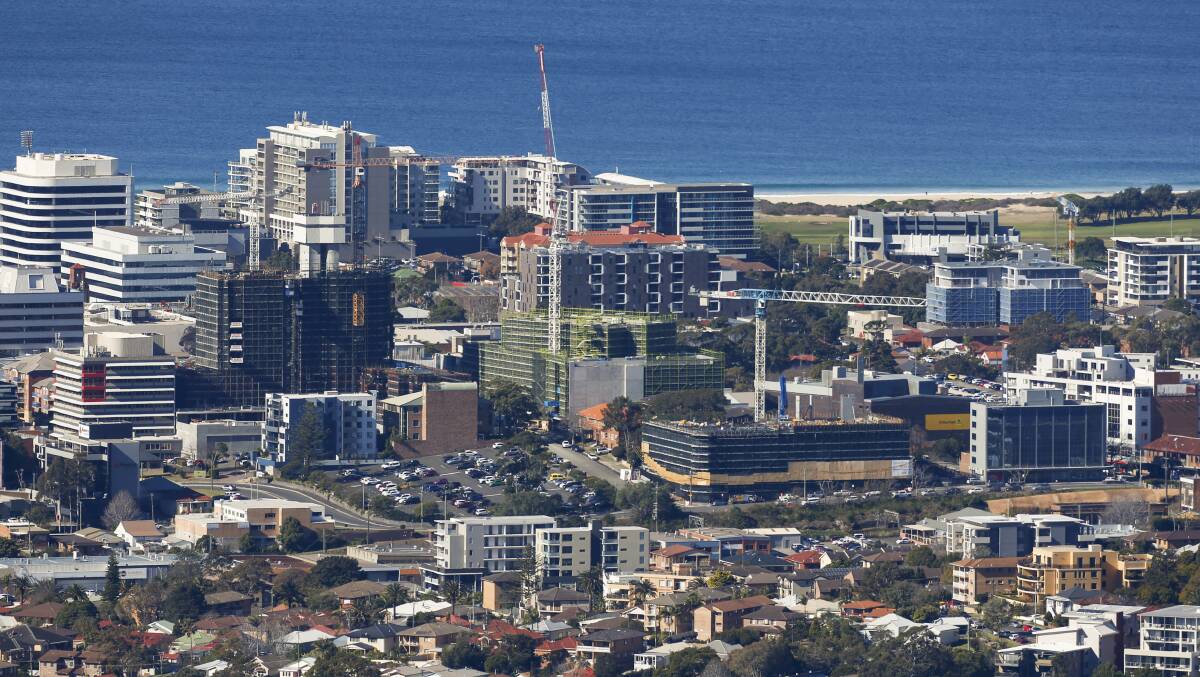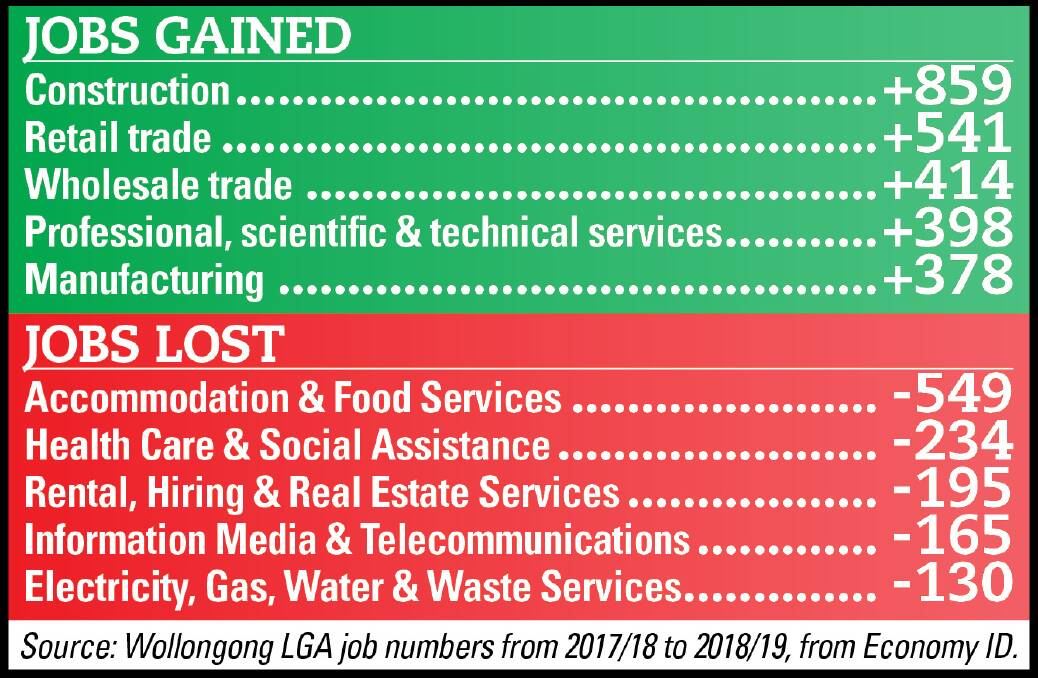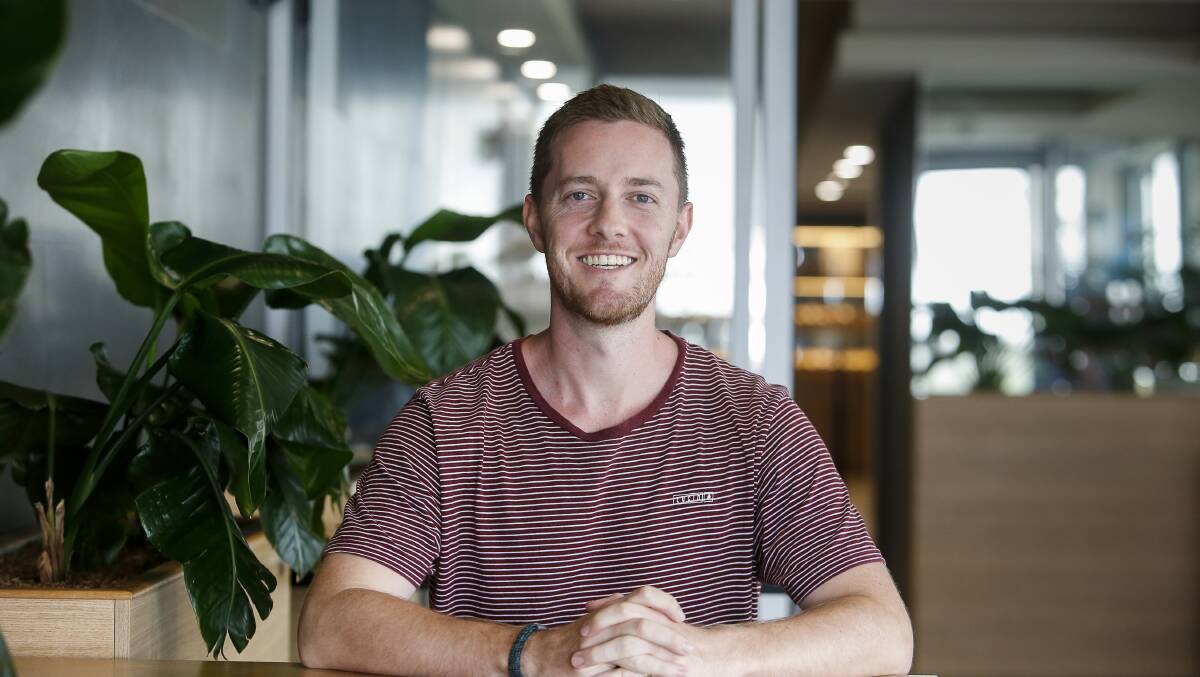
More than 1800 jobs were created in Wollongong last year, with gains in construction, white collar jobs and even struggling sectors like retail and manufacturing.
Subscribe now for unlimited access.
or signup to continue reading
The first new data released since the city adopted its target of attracting 10500 new jobs across the next decade shows efforts to diversify the region's reputation as a blue-collar, steel town are starting to pay off.
New figures provided by Wollongong City Council - based on Economy ID modelling from the census, ATO data, Centrelink and labour force surveys - show 17 per cent of these jobs have been gained in 2018-19.
The booming construction sector gained 859 in the 2018-19 year, largely driven by a high-level of building activity in the CBD and West Dapto.
The retail and wholesale trade sectors had the next biggest gains (growing by 541 and 414 jobs respectively), followed by professional, scientific and technical services (398 new jobs) and manufacturing (378 new jobs).
The council said the boost in construction jobs had come from the continued buoyancy of the local sector, which has had $1.6 billion invested since 2012. And a slowdown is still a way off, with another $400 million - including some major CBD office building construction - in the pipeline.

The surprising growth in retail and wholesale jobs amid slow trade and business closures, may be explained by an increasing amount of casualisation (the data does not take into account part time or casual job numbers).
The extra 378 manufacturing jobs - the first new positions in about 10 years - were likely influenced by a weak Australian dollar, which had helped export manufacturing companies to succeed, the council said.
The council's Economic Development Strategy, adopted in September, was based on jobs figures up to June 2017, which showed a 10-year decline in manufacturing (with 6000 jobs lost in the decade) and a white-collar brain drain - with 14,100 workers commuting to find better-paid work.
Lord Mayor Gordon Bradbery said the new figures were a significant turn-around which were - in part - thanks to the long-term strategies the council and other agencies have put in place to stimulate the region's economy.
"Attracting more investment to the city has been part of the story for years, and we're now benefiting from the fact that Wollongong is on the map as being more than an industrial city," he said, noting the 5.2 per cent growth in manufacturing sector jobs proved there was also more life in the industries which have traditionally defined the Illawarra.
"We have been getting the message out that we've got a substantial education sector - a university, a TAFE - which means you can live in Wollongong, be educated here, and now we're creating jobs so you can work here and enjoy the lifestyle too."
"The levers that we've got to pull are planning, and creating business attraction to the city, and also doing things that create a population, which needs to be sustained, which stimulates the retail sector and so on."
Despite positive numbers for the first year of the jobs target, Cr Bradbery said there was lots of work needed to keep job numbers growing amid "economic headwinds"
"It will be interesting to see those stats by the middle this year - as a nation we are facing significant economic headwinds, especially in the light of the bushfire crisis and the coronavirus," he said.
However, he said Wollongong was much better placed than it had been in the past.
"There's a newfound pride and energy in our city," he said.
"We are very talented and capable region. That's not to say it's perfect and that we won't be vulnerable challenges, but when we were so dependent on steel as the major employer we were very vulnerable. Now we have diversified the economy a lot more and we are more resilient."

'It really is life changing'
During his five years as a commuter from Wollongong to Sydney, Sean Blake spent the equivalent of about four months on the train.
Everyday, he would leave his home in Russell Vale at 7am and return about 12 hours later to take advantage of career opportunities that were - he thought - only available in Sydney.
"When I graduated from the University of Wollongong, it made sense to commute and climb the ladder a bit," the 29-year-old father-of-three said.
"But having kids really forced me to reevaluate what was important to me."
Last June Mr Blake accepted a job with growing Illawarra software firm Easy Agile, which makes apps sold through the San Francisco tech company Atlassian.
His commute is now a 15-minute bus ride into the Wollongong CBD, which means he can spend at least ten extra hours each week with his children.
"It's also good for my marriage, my mental health, I've joined the gym and I can spend time here in the community I've chosen to live in," he said.
Mr Blake's job is one of more than 1800 new positions created in Wollongong in 2018-19, and among of 398 created in the strategically important white-collar sector last year.
"The fact that there were really exciting career opportunities now in Wollongong, but that let me have a work life balance was a win-win," he said.
"I didn't want to have to trade-in my career, but I think it's becoming a bit of a myth that there are only jobs in those traditional industries here in Wollongong."
Wollongong council has been targeting professional, technical and financial services jobs though its Economic Development Strategy, in an attempt to boost better-paying industries.
"We are targeting the sectors of professional services, tech, financial services, advanced manufacturing, medical sciences and technologies, defence and scale-ups," Lord Mayor Gordon Bradbery said.
"Where we can, we are aligning target industries with Wollongong's existing home-grown talent pool including commuters and UOW graduates."


